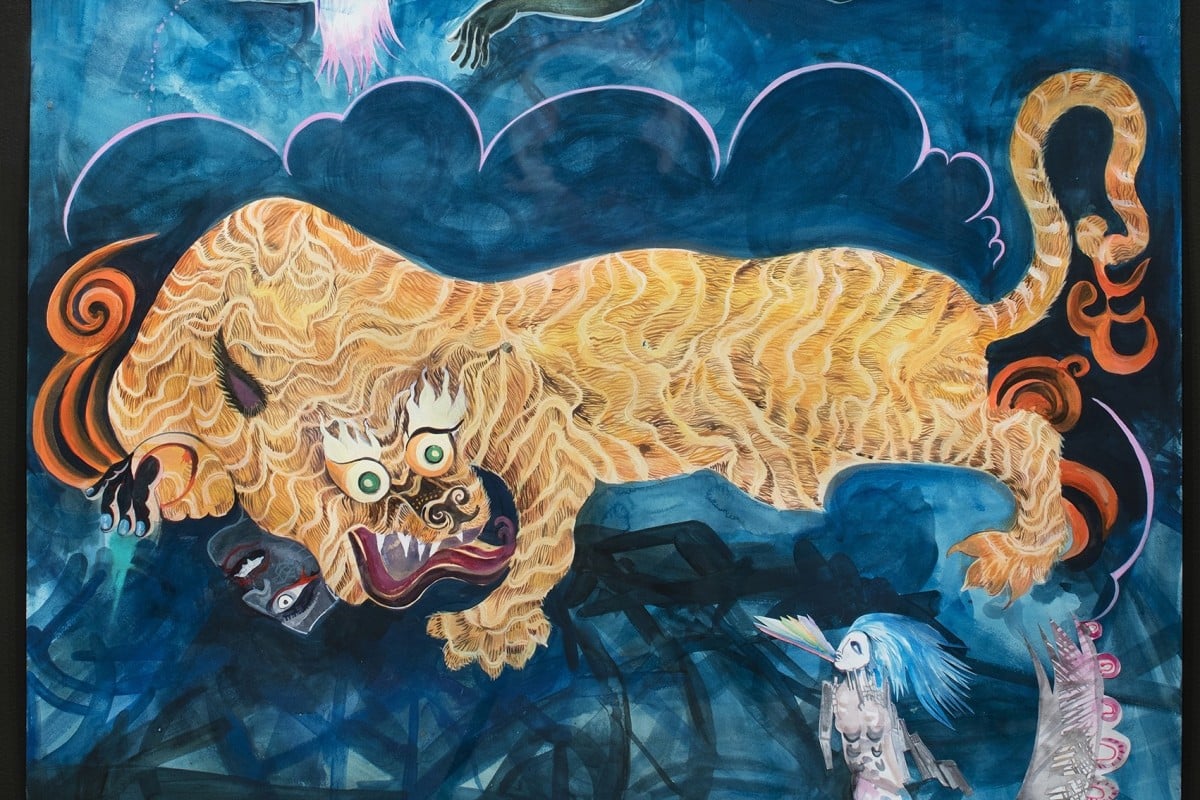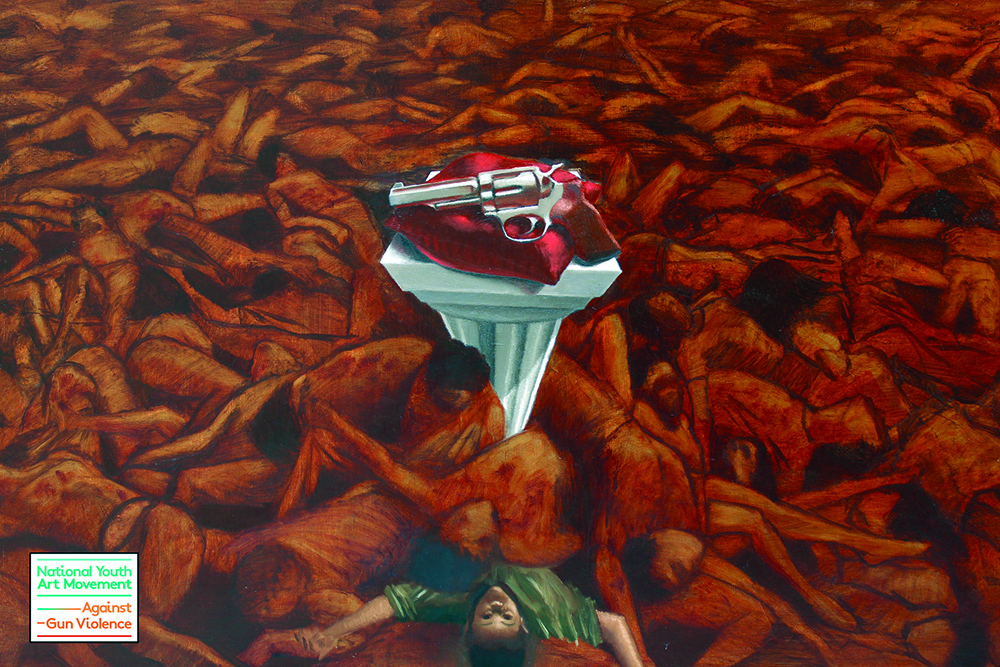- Change ringing, traditional English art of ringing a set of tower bells in an intricate series of changes, or mathematical permutations (different orderings in the ringing sequence), by pulling ropes attached to bell wheels. On five, six, or seven bells, a peal is the maximum number of permutations.
- Using technology to create art isn't a new concept here at BeFunky, we've been developing digital art effects since 2007. This innovation continues with our collection of Deluxe Edition Digital Art filters, featuring remastered versions of our Cartoonizer, oil painting, sketch, watercolor, and pop art effects.
- The art market has gone through 10 years’ worth of innovation and evolution in the past 10 months. In many ways, the events of 2020—from the pandemic to global protest movements against systemic racism—added urgency to changes that were already happening at a glacial pace. As the rest of the.
Therefore the Medieval painter who embellished the masterpiece known as the Book of Kells would have been baffled by our notions of himself as artist; to him, artist and craftsman were the same thing.
Change of Habit is a 1969 American crime drama musical film directed by William A. Graham and starring Elvis Presley and Mary Tyler Moore.Written by James Lee, S.S. Schweitzer, and Eric Bercovici, based on a story by John Joseph and Richard Morris, the film is about three Catholic nuns, preparing for their final vows, who are sent to a rough inner city neighborhood dressed as lay missionaries. The historic events and influences that we have just discussed led to changes of attitude in the artists, and affected the art itself in three major ways: Changes of content or subject matter Changes of form through a preoccupation with the principles and elements of design and color at the expense of traditional concerns with 'reality' of form.
Little had changed by the end of the 16th century when we are told that 'Art or cunning every country nourisheth... [that] is to say, [artists are] cunning men, and such as have any faculty or science, whether so ever they go shall lack no living...' So by the time of Holbein or Rubens, art was still seen as a set of skills, valued as mainly a means of livelihood.
A Change Of Attitude Summary
By the 18th century and the age of enlightenment, however, we begin to see a change of attitude: Art is described as 'A pursuit or occupation in which skill is directed toward the ratification of taste or production of what is beautiful.' Here for the first time we hear that art is associated with taste, and beauty, (though skill is still there). Mme. de Pompadour, portrayed here by Francoise Boucher, participated in the development of new standards of taste and elegance, but also did much to elevate the place of the artist in society. In the eighteenth century artists and writers were frequent guests in aristocratic salons. Fragonard, Gainsborough , Tiepolo are among the leading artists in this period.
Art Changes The World
In the 19th century Matthew Arnold stated that 'We mean by art not merely an aim to please, but also pure and faultless workmanship.' Arnold, who was the foremost establishment arbiter of taste in the later 19th c. was being a little defensive here. He was reaffirming the importance of skill, while acknowledging that art should also aim to please; that is, create something beautiful. The ideals of art as stated by Arnold are exemplified by the painting on the right. But why was he being defensive about this well established idea that artists exhibit skill? Because in the 19th century for the first time we have dissent from this idea, expressed in the idea of the Avant Garde- the notion that the creative powers of the individual artist are at the center of what art is. The artist was now seen as the leading edge, the prophet of new cultural ideas-- and this meant that the artist had begun to take more extensive liberties with established ideas of technique, interpretation, and suitable subject matter.
The idea of the Avant Garde developed around 1800 following the revolutions of the late 18th century. In the years following the revolutions in France and America the Romantics venerated the artist's creative powers; based on their creative talent, they were held up as a special and sublime class, somehow separate from ordinary mortals.
The idea of the Avant Garde role of the artist also introduced the myth that because they are ahead of their time, great artists could not be fully appreciated until they were dead. The Romantic idea that a true artist must also be a 'starving artist' also emerges, because the Avant Garde artist could not, by definition, participate in the establishments and institutions of his society; he must remain an outsider to fulfill his critical, prophetic role.
Prior to the 18th century in a mostly preliterate society visual images were the way you got information about the world. Wealthy and powerful patrons knew this, and used art and artists to persuade and teach. They also employed artists to create status objects that would make their own lives comfortable and beautiful.
In the 19th century, the spread of democracy and the rise of the middle class changed the equation. The salon became the important institution which allowed artists to present an immense variety of visions and messages, judged and driven by a rising middle class that could now afford to patronize the arts. Annual exhibitions, or salons were held, and the public avidly followed the latest innovations.

There was still a belief, as there had been in the past, in the power of art to mold human minds. But now the artist controlled his own visions and the artist was seen as a race apart - a prophet. The artist's duty, according to the Avant Garde ethic, was to provide moral and spiritual leadership and to show beauty and meaning for the dawning industrial age. That is, he was to reinvent and expand the visual language to meet changing times.
These ideals led to the birth of Modernism in the later 19th century through such movements as impressionism, expressionism, and Symbolism. Modernism is a concept born in the industrial revolution. It was the expression of an urge to embrace the new realities and materials of the industrial age, and was expressed through literature, art, decorative arts and design. Underlying most of the modernist movements have been earnest efforts at social engineering- utopianism for the new industrial state that was taking shape.
Yet inevitably, as we shall see, there was also a counter-movement toward nostalgia and tradition, a resistance to the accelerating rate of change. This has often been expressed in visual arts by a taste for decorative detail, realism in painting, and a general preference for the elaborate. This was in contrast with the modernist tendency to simplify forms, reduce decorative detail, and retreat from realism. The emphasis on form also resulted in attention to the materials used, and the visual qualities they offer.
 The historic events and influences that we have just discussed led to changes of attitude in the artists, and affected the art itself in three major ways:
The historic events and influences that we have just discussed led to changes of attitude in the artists, and affected the art itself in three major ways: - Changes of content or subject matter
- Changes of form through a preoccupation with the principles and elements of design and color at the expense of traditional concerns with 'reality' of form
- Changes in the materials utilized by artists
The history of art and design does not occur in a vacuum. Artists and designers are only responding to the events of their time. These are some of the issues that motivated changes in subject matter since the mid-19th century:
The social and political environment changed drastically during this period. Society moved from the ancient traditional rule of religiously sanctioned autocracies into an era of secular democracies and dictatorships. The industrial revolution also contributed to the restructuring of society. Technology, colonialism, and social change brought about contacts between peoples previously separated by distance, language, and social status. The result has been more than a century of turbulence, social struggle, and warfare, all of which can be seen in the arts of the times.Since the 1840s photography has offered a mechanical means of faithfully recording visual data that surpassed the ability of the painter. The earliest commercially successful form of photography was the daguerrotype (click on Gallery on the left). Since photography could record visual data so perfectly, the artist was left to wonder what he could do that the camera could not. This led to many experiments in style, technique, and interpretation. For other examples of early photography, try this link to Edweard Muybridge, an early practitioner of stop-action photography; or this collection of early photographs.
The creation of photographic images has also evolved into an art form in its own right. Early practitioners such as Matthew Brady , Alfred Stieglitz and others brought the possibilities of the camera well beyond that of a mechanical device for copying visual 'facts.' There has been an ongoing dialogue between the painter and the photographer, as each has learned from the vision of the other.
The existence of photographic images inspired artists to look for other subject matter. Artists began to concern themselves with issues such as the effects of light, the relationships of color, and the fundamental character of form and mass. Comparisons of photographs with paintings by such artists as Monet and Cezanne show that the artist was selecting, simplifying, flattening, intensifying, even abstracting the view which is before his eyes.
 One of the first modern movements to emerge was Impressionism . The subject matter of Impressionism was light. These painters were interested in studying how changes in light affected color. They left the studio where artists had traditionally worked even when doing paintings of nature. In natural settings they explored the ways in which changing light conditions altered the appearance of color and form. One of the leading figures in the development of Impressionism was Monet, whose work gave its name to this movement.
One of the first modern movements to emerge was Impressionism . The subject matter of Impressionism was light. These painters were interested in studying how changes in light affected color. They left the studio where artists had traditionally worked even when doing paintings of nature. In natural settings they explored the ways in which changing light conditions altered the appearance of color and form. One of the leading figures in the development of Impressionism was Monet, whose work gave its name to this movement. 

